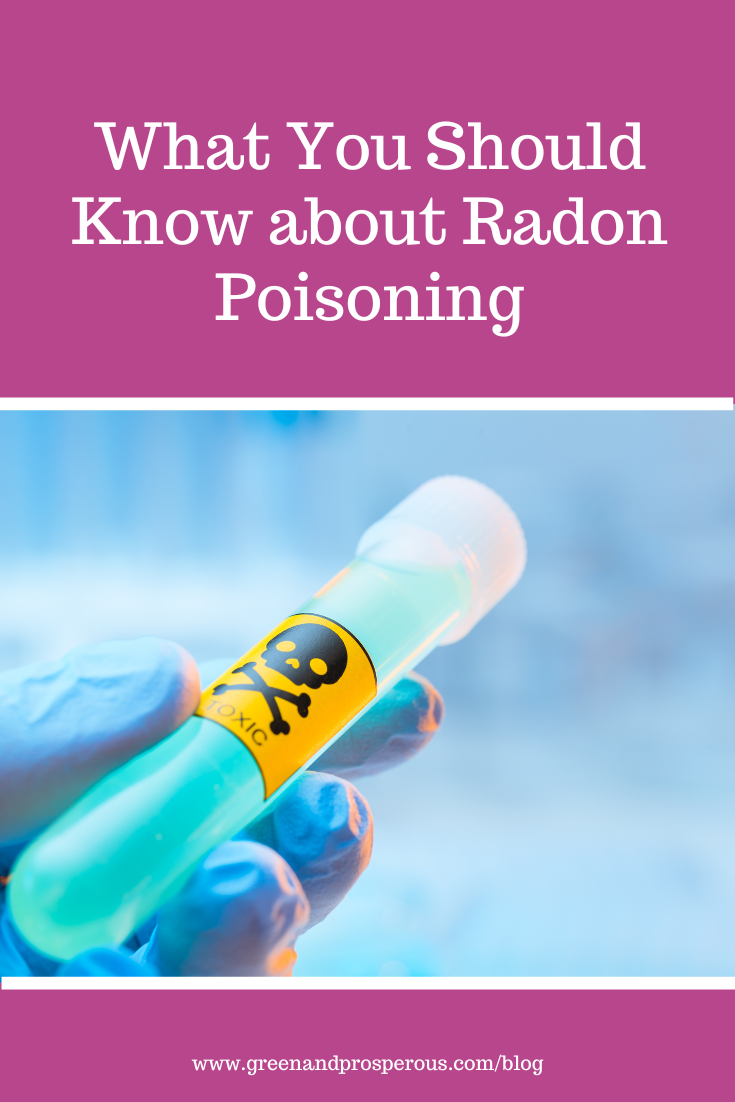What You Should Know about Radon Poisoning
/(updated November 14, 2022)
Guest post by propertEco
A killer might be lurking in your house: no, it is not a person, but an invisible odorless and colorless gas known as radon. Radon gas is formed when the uranium that is naturally present in the ground decays. The gas that travels to the surface of the earth is called Radon.
What is radon and what health risks does it pose?
Radon is a naturally occurring gas found in soil, water, rocks, and air. It is colorless, odorless, tasteless, and non-toxic. Radon is produced when uranium decays into other elements. The decay process releases alpha particles which then collide with nitrogen atoms in the surrounding atmosphere. These collisions create radioactive gases such as radon.
The Environmental Protection Agency (EPA) has set the recommended action level for indoor radon concentrations at 4 pCi/L. This means that if the average amount of radon levels in the air is more than 4 pCi/l, then it then it has reached dangerous levels and should be remedied. If the average amount of radon levels is less than 4 pCi / l, then it's safe to stay where you are. The gas that migrates to the ground outdoors may not cause as much of a health hazard as the ones that accumulate inside buildings or houses. Radon itself is not harmful, but when the radon in air decays it forms radon progeny, which easily attaches itself to dust particles inside the house. When a person inhales this gas for a long time, it can lead to several lung conditions like a cough, lung cancer, emphysema, and other ailments. Most homeowners aren't aware of the radon risks and thus don't monitor the levels of radon gas in their homes.
Scientists believe that between 15,000 and 20,000 lung cancer deaths in the US are caused by radon poisoning. Although radon is considered the second leading cause of lung cancer, don't be alarmed: there are many ways you can prevent the ill effects of radon. You can test for levels of radon in your house using using a radon test kit or several other different methods to detect indoor radon concentrations.
What are some radon mitigation methods?
If you live in a house built before 1978, you should contact your local health department about radon testing. They will provide you with a free kit that will allow you to measure the radon levels in your home.
You can also buy a radon detector that will alert you when the levels get too high. There are two types of detectors available; one detects only alpha radiation while the other detects both alpha and beta radiation.
There are other things you can do to reduce the risk of getting sick from radon exposure.
Sealing any cracks in floors, walls, roofs, and foundation is a must to help reduce the amount of radon that can enter. If you have a basement, make sure you seal all the cracks around the windows and doors. Another way to prevent radon gas from entering your home is by installing a ventilator system. This will help remove the radon from the air. For example, you can install a soil suction radon reduction system, also known as vent pipe and fan system. A three- or four-inch pipe pulls radon from underneath the house and vents it outside. This keeps it from accumulating inside your home.
Having proper ventilation to the house, including the basement, is absolutely necessary. In fact, the basement is the first place radon accumulates in a building. Learn more about radon in homes and office buildings, radon poisoning (including how it happens, and how it affects your health), and radon mitigation strategies.
Like this? Please pin!






































